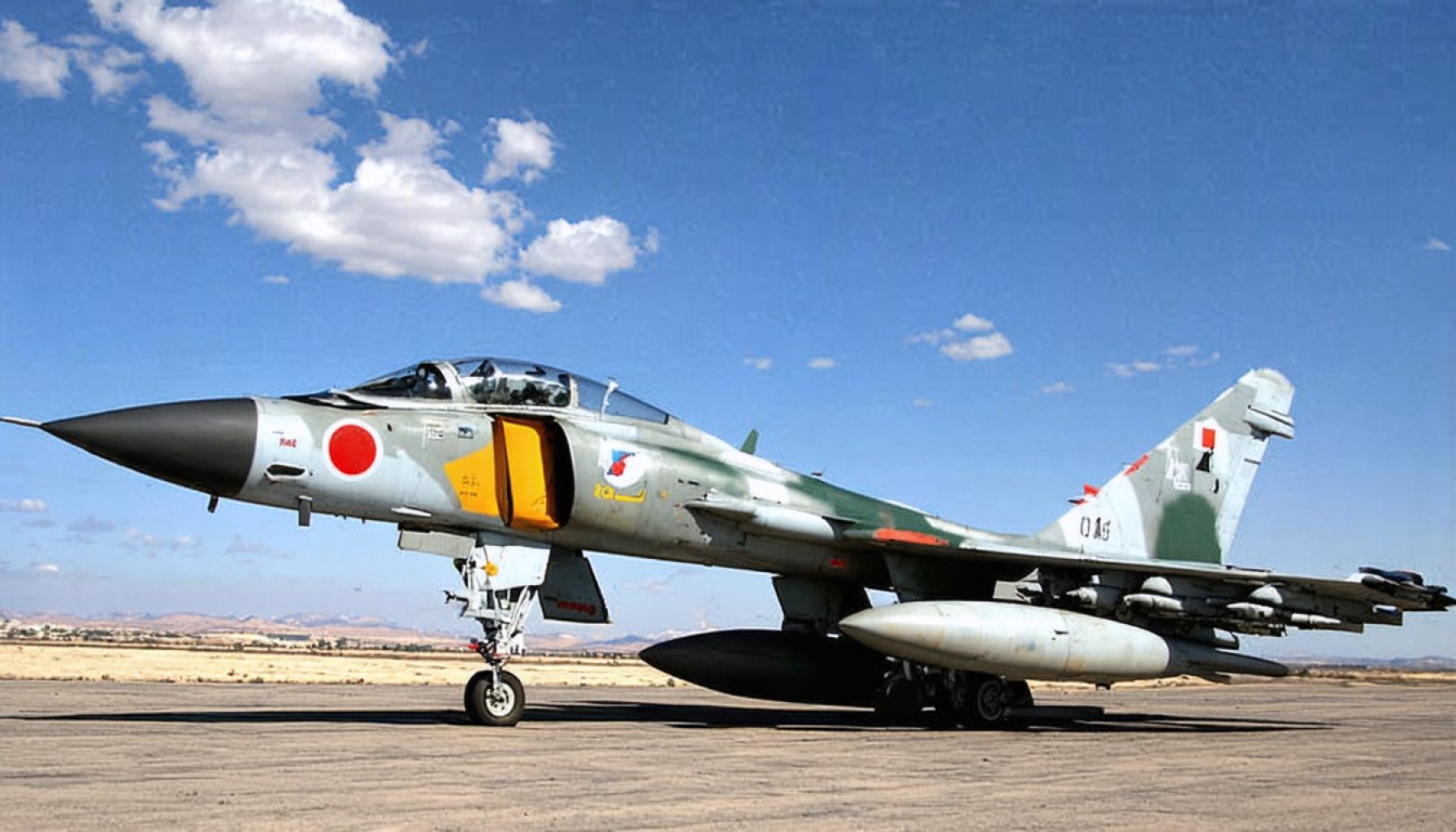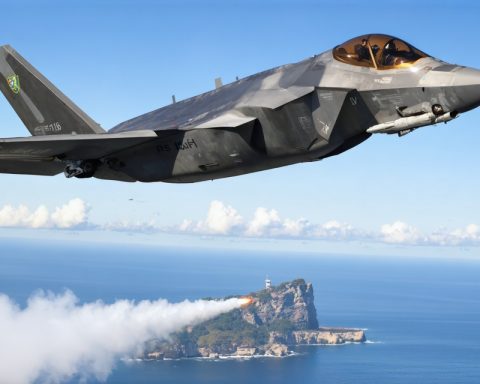- The French Air and Space Force will introduce the upgraded Mirage 2000D RMV into service on April 9, 2025.
- Upgrades include a modern cockpit and the TALIOS targeting pod, enhancing precision in diverse conditions.
- The Mirage 2000D RMV’s arsenal features advanced MICA IR missiles, a 30mm CC422 gun pod, and Link-16 for NATO integration.
- This upgrade project, initiated in 2016, navigated the challenges of incorporating new technology into an older airframe.
- Politically, the Mirage 2000D RMV reinforces France’s defense capabilities amid global tensions, especially regarding Ukraine.
- It offers a cost-effective alternative for nations seeking to modernize aging fleets without investing in newer, more expensive jets.
- The Mirage 2000D RMV endures as a symbol of resilience, balancing economy with versatile power in modern warfare.
At the Nancy-Ochey Air Base on April 9, 2025, the French Air and Space Force will usher the Mirage 2000D RMV into operational service, culminating an ambitious effort to rejuvenate a fleet that has defined French aerial prowess for decades. Under the watchful eyes of military brass and engineers, these newly upgraded fighter-bombers are emerging as symbols of France’s resolve and ingenuity in a complex geopolitical landscape.
The Mirage 2000D, a sturdy workhorse since the 1990s, stands reincarnated with cutting-edge upgrades engineered by aerospace stalwarts Dassault and Thales. While the American F-35 and the advanced Rafale captivate headlines with futuristic capabilities, France has embarked on a different journey—breathing new life into its legacy aircraft to punch above its weight in today’s multifaceted theaters of war.
This endeavor, rooted in decisions made back in 2016, required rethinking supply chains, retooling production lines, and orchestrating a delicate dance with technological obsolescence. Outdated components gave way to a state-of-the-art cockpit featuring multifunction displays, relieving the pilots of the analog intricacies of yesteryears. Touted now is the TALIOS targeting pod, which empowers pilots with unparalleled precision, transcending the whims of weather and war.
Indeed, the Mirage 2000D has become a phoenix of sorts. It wields an arsenal that includes the advanced MICA IR missiles and a formidable 30mm CC422 gun pod—features that transform this fighter into a multiplicative force on the battlefield. Modern combat essentials like the Link-16 data system forge its connectivity with NATO allies, transforming this upgraded relic into a lightning node in strategic webs spun across European skies.
Yet, this is not merely a technical tale. It is a narrative rich with the sweat and strain of engineers and airmen. Crafting compatibility between novel technology and a vintage airframe demanded innovation and resilience. The successful integration of digital systems into an old platform and the rigorous testing needed to marry 21st-century components with 20th-century steel speak to a triumph that defies easy categorization.
Politically, the timing is significant. With France bolstering Kyiv through fighter transfers and enhancing its military capabilities against a backdrop of simmering conflicts in Ukraine and beyond, the Mirage 2000D RMV is more than a technological marvel. It’s a statement of intent. At home, its capabilities bolster France’s defense stance; abroad, it offers a template for similarly challenged nations seeking cost-effective solutions for aging fleets.
For nations like Poland or Romania, the Mirage 2000D RMV represents a pragmatic alternative to steeper investments like the F-16. It embodies a blend of economy and efficacy, particularly when juxtaposed against other jets like the Su-25’s single-minded approach to ground attacks. The Mirage doesn’t aim to be everything—it offers precisely what’s needed: reliable, versatile power without the excessive price tag.
And while some corners of defense circles murmur about potential enhancements to electronic warfare capabilities as threats evolve, the Mirage 2000D RMV serenely maintains its course, sure-footed in its reinvention. As France charts its unique path through a turbulent global milieu, the Mirage 2000D RMV stakes its claim, not as a star player, but as a resilient, adaptable soldier in a world where durability sometimes trumps novelty.
The Mirage 2000D RMV: Revitalizing French Aerial Might in a Modern Military Realm
Introduction
On April 9, 2025, at the Nancy-Ochey Air Base, the French Air and Space Force will see the Mirage 2000D RMV enter operational service, celebrating the impressive modernization of a fleet that has been pivotal to France’s air capabilities for decades. This initiative, reflecting cutting-edge military innovation, stands as a testament to France’s strategic ingenuity in maintaining its aerial superiority in a fast-evolving global landscape.
Key Features and Upgrades
The rejuvenated Mirage 2000D RMV integrates a suite of advanced upgrades tailored by Dassault and Thales, bringing the aircraft into the modern era:
– Advanced Cockpit Design: The inclusion of multifunction displays transitions the Mirage’s cockpit from analog to digital, providing pilots with streamlined access to crucial data.
– TALIOS Targeting Pod: This enhancement offers exceptional precision for targeting, regardless of adverse weather conditions, elevating the aircraft’s operational effectiveness.
– Enhanced Weaponry: Equipped with MICA IR missiles and a 30mm CC422 gun pod, the Mirage transforms into a powerful multi-role combat aircraft capable of precision strikes.
– Network-Centric Capabilities: The Link-16 data system enhances interoperability, strengthening coordination with NATO forces and amplifying the strategic reach of missions.
Comparing the Mirage 2000D RMV
The decision to upgrade the Mirage 2000D rather than investing in newer models like the F-35 or Rafale underscores France’s commitment to cost-effective modernization. For countries considering fleet upgrades, the Mirage 2000D RMV offers a compelling mix of modern capabilities at a fraction of the cost associated with newer aircraft models.
– Versatility vs. Specialization: While models like the Su-25 are focused solely on ground attack, the Mirage 2000D RMV presents a balanced capability set for both air-to-air and air-to-ground missions.
– Economy vs. Expense: For nations such as Poland and Romania, the Mirage presents a viable alternative to more expensive Western jets, striking a balance between modernization costs and operational capabilities.
The Political and Strategic Context
The Mirage 2000D RMV’s rollout is strategically timed against a backdrop of geopolitical tensions, particularly in Eastern Europe. France’s commitment to strengthening Kyiv and enhancing its military assets aligns with broader defense objectives, demonstrating resolve and signaling to allies France’s capabilities for support and collaboration.
Challenges and Limitations
While the miraculous modernization of the Mirage 2000D RMV stands as a feat of engineering, ongoing discussions persist about the potential need for further enhancements in electronic warfare capabilities to match evolving threats. However, the current suite of upgrades PRovides reassurance in terms of operational durability and strategic adaptability.
Actionable Insights and Recommendations
– For Defense Analysts: The Mirage 2000D RMV offers a benchmark for cost-effective modernization, suitable for nations with limited defense budgets seeking to extend the lifespan of existing fleets.
– For Policy Makers: Investing in upgrades similar to those on the Mirage 2000D RMV provides a pragmatic approach to balancing defense capabilities with fiscal responsibility.
– For Aerospace Engineers: The integration of modern digital systems into legacy airframes should be studied as a template for similar endeavors across global defense industries.
Conclusion
The Mirage 2000D RMV, with its formidable mix of durability and modern enhancements, speaks volumes about France’s strategic acumen in maintaining a resilient and versatile air force. As a model of cost-efficient modernization, it not only fortifies France’s aerial prowess but also offers a guiding paradigm for countries navigating similar defense challenges in a complex global environment.
For more insights on modern military aircraft and defense strategies, visit the official website of the French Ministry of Defense.










